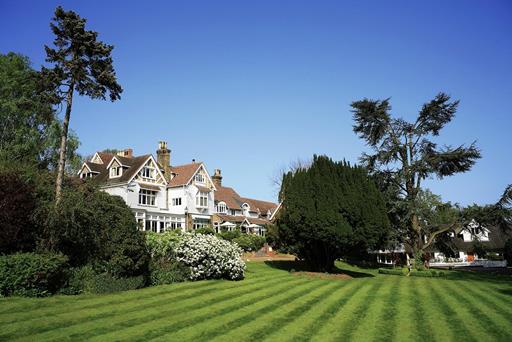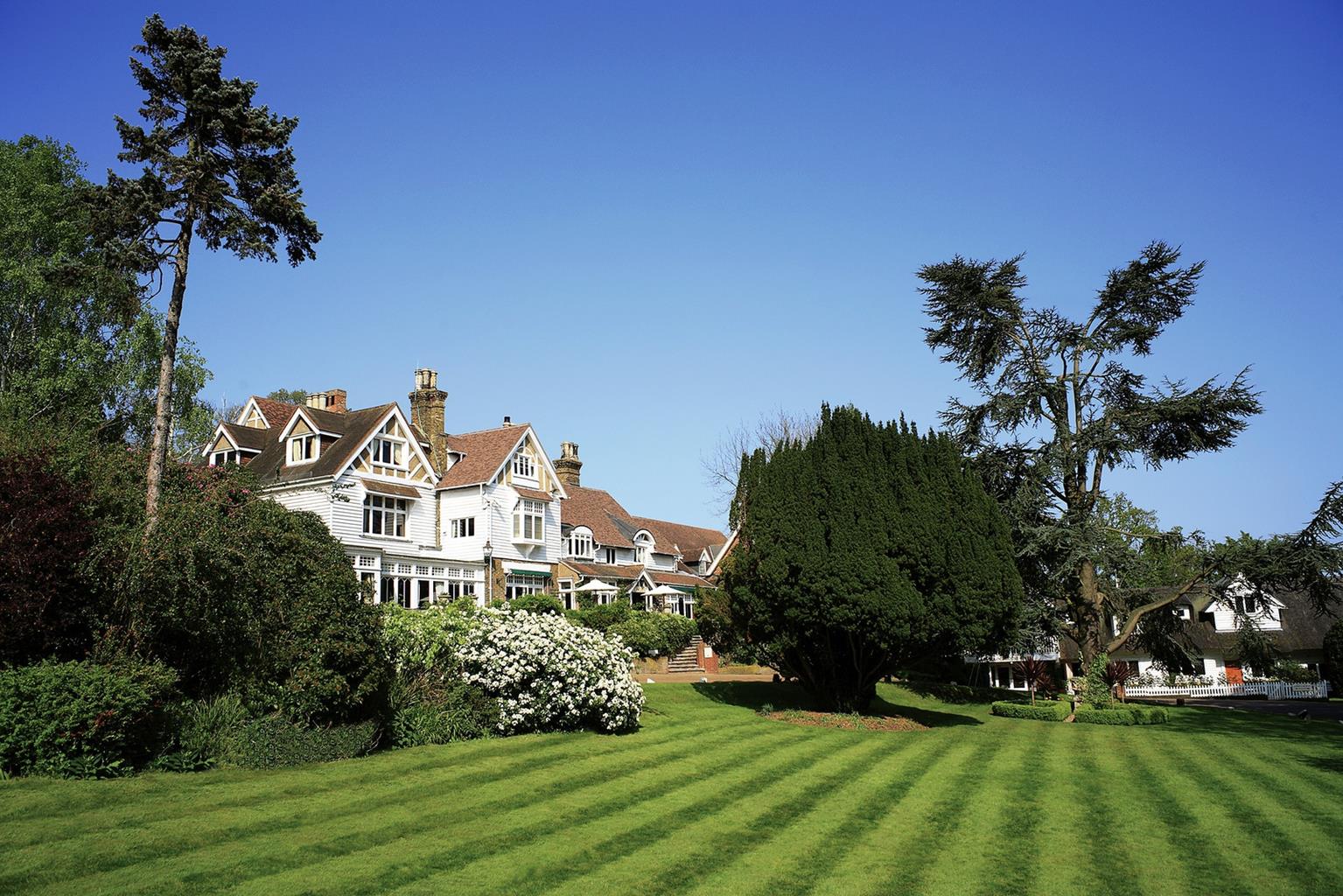This beautiful country house hotel, conveniently located for the M25, is set in 12 acres of…
Davy Down by Lakeside

Combine wonderful woodland walking and riverside views with a visit to one of the southeast's busiest shopping centres.
2.25 miles (3.6kms)
About the walk
Davy Down is part of the Thames Chase Community Forest, one of 12 such forests in England covering large areas close to towns and cities. Far from being continuous plantings of trees in the traditional sense, community forests are a conglomeration of wooded landscapes which may include farmland, villages, nature areas and public open spaces. The aim of the community forest is to create easily accessible landscapes for wildlife, work, education and recreation.
Davy Down nestles in the Mardyke Valley, among large modern developments to the northeast of Lakeside Shopping Centre. Once used for market gardening, the land was taken over in 1985 as part of the Thames Chase Community Forest when the A13 trunk road was built, thus bringing to an end a long history of agricultural use. Derelict outbuildings were replaced by the Davy Down visitors' car park. From this abandoned farmland, new landscapes are being created – you will see ponds and wetlands, new woodland hedgerows and areas planted with more than 4,000 trees.
What’s in a name?
The name Mardyke means boundary ditch, and it is mentioned in records dating from 1062. The River Mardyke winds its way through the Plain of Thurrock, from its source, 8 miles (12.9km) upstream, to the River Thames at Purfleet, meandering through Davy Down where the valley is dominated by flood plain meadows bounded by ancient woodlands. Two bridges cross the river on this walk: the modern bridge by the viaduct, and Stifford Bridge, now wooden but originally a medieval stone bridge dating to the 15th century.
Landscape and changes
Until the 15th century the valley was mainly wet fenland, much like the rest of Essex. The land was drained for agriculture and the course of the river was straightened. Work on this site has increased access in the valley, and improved the landscape and wildlife habitat. Recent efforts to return the channelled river to a more natural feature have created shelves and bays and tree plantations along with hedgerows.
Historical pumps
The Stifford Pumping Station buildings were constructed in 1926 to house large diesel engines which provided the power to extract water from a 150ft (46m) deep borehole in the chalk below. A modern electric pump is used today, but two of the enormous Sulzer diesel engines that once used to drive the pumps are on display in the visitor centre.
Walk directions
Start from the visitors’ car park and follow the path as it winds its way across grass towards the Stifford Pumping Station, which is open to visitors every Thursday afternoon between 1–5pm. The visitor information centre is next to the pumping station. After climbing steps towards the pumping station, continue to the left of the metal fencing to the trees and join a boardwalk which bisects three ponds. In front of you, the impressive 1892 railway viaduct spans the valley. Turn right and head towards a small modern footbridge which you cross to link up with the Mardyke Way.
After the footbridge turn left. Cross a concrete bridge and follow the path round a sharp right bend. Take the first path right into Brannetts Wood, one of the oldest recorded ancient woodlands in south Essex. The track, through thick foliage and tall trees, rises gently and later bears left in a westerly direction. Ignore the footpath on the right that leads to Millards Garden, and after 0.5 miles (800m), a main cross path indicated the start of the less dense Millards Green ahead.
Turn left here and, after 30yds (27m), rejoin the grassy Mardyke Way cross path, keeping the fence on your right. Beyond the fence the meadow flood plain stretches to the Mardyke River. In summer it's accessible on foot, but it soon floods after heavy rains. Retrace your steps beneath the viaduct along the wide, grassy riverside path. Ignore the modern footbridge. Keep ahead for 300yds (274m) and continue over the next bridge, Stifford Bridge, where medieval pilgrims once crossed on their way to Canterbury.
Turn right, go through a squeeze stile and walk towards the viaduct in the distance. This riverside path has occasional seating overlooking the water, where you can watch damselflies in the summer months. Look out too, for glow worms. Just before the viaduct and to the left of the modern bridge, the path forks. Follow the right-hand path which runs close to the viaduct. After 200yds (183m) take the path right, uphill, and walk between rows of native trees, part of a new woodland scheme. The path continues uphill and passes quite close to the Stifford road. Looking left, there is a marvellous view of Davy Down and the pumping station. To finish, follow the path back to the car park.
Additional information
Forest tracks, river bank and grassy paths prone to muddiness, boardwalk
Meadow, woodland, flood plains and river
Good place for a romp off-lead in woods
OS Explorer 162 Greenwich & Gravesend
Free car park at Davy Down, North Stifford (in Backs Lane, off Pilgrims Lane)
Davy Down Visitor Centre
WALKING IN SAFETY
Read our tips to look after yourself and the environment when following this walk.
Find out more
Also in the area
About the area
Discover Thurrock
Nearby stays
Restaurants and Pubs
Nearby experiences
Recommended things to do
Why choose Rated Trips?
Your trusted guide to rated places across the UK
The best coverage
Discover more than 15,000 professionally rated places to stay, eat and visit from across the UK and Ireland.
Quality assured
Choose a place to stay safe in the knowledge that it has been expertly assessed by trained assessors.
Plan your next trip
Search by location or the type of place you're visiting to find your next ideal holiday experience.
Travel inspiration
Read our articles, city guides and recommended things to do for inspiration. We're here to help you explore the UK.













